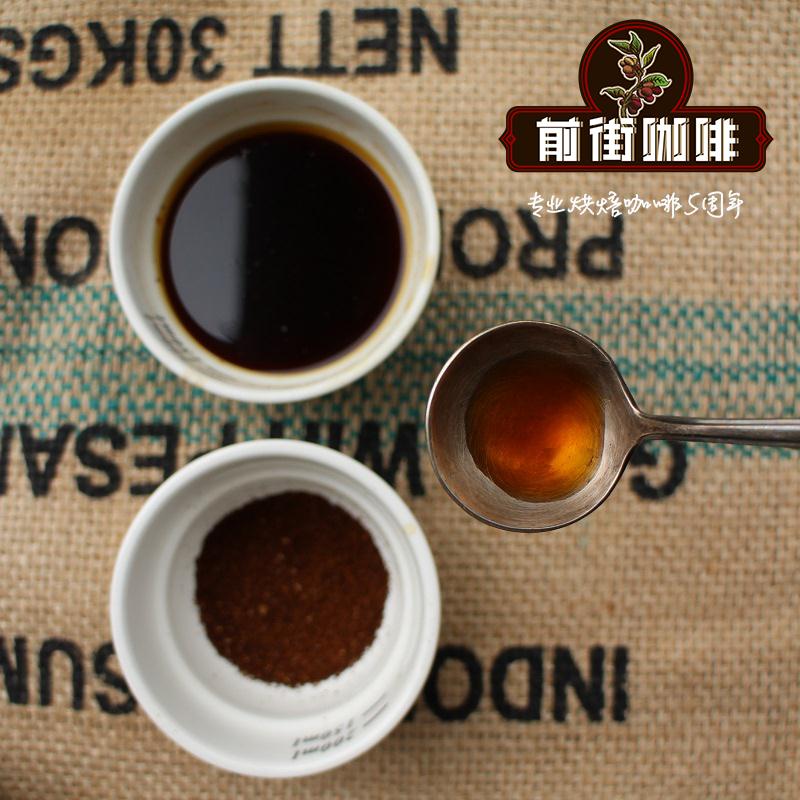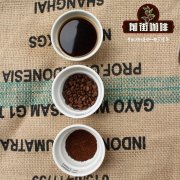36 fragrance bottles Enzymatic groups Aroma types Fruit, vegetable, nectar

Professional coffee knowledge exchange more coffee bean information please follow the coffee workshop (Wechat official account cafe_style)
Enzymatic (enzymatic group)
(fruit): lemon Lemon, apple Apple, apricot Apricot
(vegetables): potato Potato, cucumber Cucumber, pea GardenPeas
(nectar): coffee flower Coffee Blossom, perfume rose TeaRose, honey Honeyed
Enzymatic enzymatic group
15 lemon Lemon fragrance species (Aroma group) citrus Citrus
Aroma characteristics (Aromatic features of the sample): this is a fresh, lively, refreshing lemon flavor, usually associated with the sour taste of fruit. This flavor is represented here by lemon essence, which is composed of hydrocarbons and terpene acetaldehyde, formed by cold pressing or distillation of lemon peel.
The "lemon" aroma of coffee (The smell of & # 39; lemon flavor 39; in coffee): this top flavor consists of a variety of ingredients, such as 1. one. 3-trimethyltryptophan, cyclohexylamine, 2-vinyl-3pyramine, etc., this aroma brings vitality, freshness, elegance and refinement to coffee.
Coffee tasting (Coffee tasting): for me, it's pretty fruity. It brings refreshing vitality to some rare aristocratic coffee. I find that this taste is more obvious in the sense of taste than in the sense of smell. It is more gorgeous in Kenyan AA coffee, but much more low-key in Colombian Excelsos coffee, with aromas of cucumber, coffee fruit and roasted pineapple. I also found it in some Guatemalan coffee. This flavor is not very obvious in sigri coffee in Papua New Guinea, but it does exist, but it is accompanied by aromas of chocolate, vanilla and coffee flowers.
16 apricot Apricot flavor species (Aroma group) fruits
Aroma characteristics (Aromatic features of the sample): this beautiful, concentrated and clear aroma is the taste of fresh fruit and preserved almonds. This is an extraordinary taste, with subtle flavors ranging from freshly picked apricots to fully ripe, full and penetrating flavors, apricots kissed by the sun, and even gorgeous dried fruits. Benzaldehyde, linalool, Alpha- terpineol, and gamma- lactone are common in apricots and coffee.
The "apricot" aroma of coffee (The smell of & # 39; in coffee): with this exquisite flavor, coffee always has an elegant flavor. This flavor often appears in the front taste and has a refreshing quality.
Coffee tasting (Coffee tasting): don't expect this smell to pop up in front of you. It is very low-key and is an iconic feature of Ethiopia's Sidamo, one of the most popular coffees in the world.
17 Apple: Apple, Aroma group fruit
Aroma characteristics (Aromatic features of the sample): this is the first taste of freshly cut apples. It gives the palate instant freshness and a slightly sweet taste. Apples and coffee have many elements in common: acetaldehyde, cyclohexane, caproic acid and some esters.
The "apple" aroma of coffee (The smell of & # 39; in coffee): this is a basic, pleasant fruit aroma that has always been present in the bottom taste, especially in Central American and Colombian coffee, which has an interesting combination with the fruity flavor of the coffee. This apple flavor can also be found in some very new producing areas of coffee, such as Haitian coffee.
Coffee tasting (Coffee tasting): we think it is important to add this fresh, sweet taste. Don't worry, no one will blame you if you confuse the smell of apple with the smell of freshly mowed grass when you smell Haitian coffee. Apples, like grass, bring a certain "green spirit" to coffee, which is very pleasant, if not too strong.
two. Potato (potato): potato / potato flavor species (Aroma group) earth, sulfur
Flavor characteristics (Aromatic features of the sample): this is the potato / potato boiled flavor, when combined with other flavors, it is still charming and eye-catching. This fragrance comes from the methionine produced during baking.
The smell of & # 39; Potato / Potato; in coffee: this is a common aroma of coffee, but it does not dominate other flavors. If it tastes heavy, the coffee beans are not properly selected. Under normal circumstances, this is the unique aroma characteristic of coffee.
Coffee tasting (Coffee tasting): I often notice this fascinating aroma in the delicate and seductive Costa Rican coffee, Colombian soil immediately, and the very fragrant grass-scented Honduras coffee. This smell is also common in East Africa, especially Zimbabwean coffee. Coffee is even more important in Central America.
three. Pea: pea scented species of green plants
Aroma characteristics (Aromatic features of the sample): this is fresh pea pea with its attractive pod fragrance. It is a delicate fragrance, different from the kind of sticky sweet, often metallic canned peas! The garden flavor of this pea and coffee raw bean is 2-isopropyl-3-methoxypyrazine (2-methoxy-3-isopropylpyrazine). It is such a strong smell that it can be smelled in the Olympic swimming pool with only a few drops.
The "pea" aroma of coffee: this smell is almost often found in raw beans or lightly roasted coffee, but the deeper it is roasted, the weaker it is. Compared with brewed coffee it is more significant in ground coffee powder and more common in Arabian beans than robusta beans. This important flavor brings vitality and strength to balance the overall aroma of coffee.
Coffee tasting: I find the smell a little reckless in Robusta, Brazil. It is very prominent in Alabia and Robusta beans in Uganda. Arabian beans are also quite obvious in Guatemala.
4 cucumber: fragrance species: green plants.
Aroma characteristics: this is the smell of crispy cucumbers. This fresh, high-quality aroma is derived from trans-2-nonenal (trans-2-nonenal). Other similar compounds remind you of melons, watermelons, and fresh Pacific oysters.
The "cucumber" aroma of coffee: although it does not dominate other flavors, it is very distinctive. Although this flavor is lively and fresh, it still exists after the bean harvest and storage is a little ripe, and is about to be transformed into a woody flavor.
Coffee tasting: this is one of the interesting flavors of coffee. It is well seen in Tachira in Venezuela, but I have found this smell to varying degrees in many other coffee beans. Whether it's the Brazilian sun, Arabiya, or the very subtle and elegant Colombian selection Vierduba beans (Excelso Valledupar). I also recognize this flavor in African coffee, such as Ethiopian mokali peas (Mocha Limu), light and delicate Zaire coffee, and warm Kenyan beans. If you can't smell it right away, don't lose heart, you can taste it in the aftertaste of the coffee.
12 coffee flowers: coffee flowers Coffee Blossom fragrance species (Aroma group): flowers Floral
Fragrance characteristics (Aromatic features of the sample): this scent is the sweet smell of lovely white flowers on coffee trees, which were called Arabian jasmine in the 17th century because the two plants are very similar. Some people think it looks like orange blossoms. Each coffee tree blossoms more than 6000 flowers every year, giving out a delicious aroma. Usually these flowers grow with fruit, which is a rare phenomenon in nature. This Jasminum gradiflorum essential oil is more fruity and fragrant than samba jasmine, providing us with a pleasant smell in coffee.
The "coffee blossom" aroma of coffee (The smell of & # 39): this simple and elegant taste is still a challenge even for patient and attentive tasters. It is a sign of delicacy and luxury.
11 Camellia / red currant jam: flavor type (Aroma group): flower / fruit Floral / fruity
Fragrance characteristics: this is the fragrance of the famous Damascus roses grown in Turkey and Bulgaria. It tastes different from the French Glass grasse, known as the May Rose. This flavor comes from beta- damasone and is recognized in Bulgarian rose essential oils and roasted coffee. The taste of this compound is also reminiscent of red currant jam.
The "camellias" aroma of coffee (The smell of & # 39; in coffee): this outstanding and charming aroma brings a strong fresh smell to the coffee. This flavor is more pronounced in Arabica beans than in robusta beans and is more recognizable in brewed coffee than in coffee beans.
Coffee tasting (Coffee tasting): this subtle and complex taste is the hallmark of outstanding coffee, but don't expect it to appear in haste. It stands out in Pacamara beans as well as in the tender Salvadoran Marrago peas; in very good Guatemalan coffee the taste is beautifully coordinated with jasmine aromas.
19 Honey: honey sweet flavor species (Aroma group) plants, wax
Aromatic features of sample: this smell is reminiscent of nectar rather than wax or animal flavor. It also reminds people of honey, gingerbread, cream almonds or some kind of tobacco. It has been identified that this taste is caused by hexanal in the coffee.
The "honey" aroma of coffee (The smell of & # 39; in coffee): another superior aroma, though not as important as cedar, apricot or fresh cream, is still found only in great coffee. This fragrance is more common in grinding than in cooking; it is stronger in Arabica beans than in robusta beans.
Coffee tasting (Coffee tasting): not every time, but the flavor can be found in the Sigri estate in Papua New Guinea or in the famous Liquidambar coffee beans in Mexico on the other side of the world.
END
Important Notice :
前街咖啡 FrontStreet Coffee has moved to new addredd:
FrontStreet Coffee Address: 315,Donghua East Road,GuangZhou
Tel:020 38364473
- Prev

Brief introduction of Coffee Flavor defect Group Aromatic Taint 36 smell bottle
Professional coffee knowledge exchange more coffee bean information please follow the coffee workshop (Wechat official account cafe_style) Aromatic Taint (defect group) (wet): soil Eathy, straw Straw, medicine Medicinal soil: flavor type (Aroma group) earth soil flavor characteristics (Aromatic features of the sample): this is new after heavy rain
- Next

36 flavor bottle caramel group nuts, desserts, toast and fresh butter
Professional coffee knowledge exchange more coffee bean information please follow the coffee workshop (Wechat official account cafe_style) Sugar Browning (caramel group) (four nuts): roasted almond Roasted Almonds, roasted peanut RoastedPeanuts, roasted hazelnut Roaster Hazelnuts, walnut Walnuts (three desserts): caramel Caramel, dark chocolate BlackChocolate,
Related
- How did the Salvadoran coffee industry develop in Central America?
- What exactly does the golden cup extraction of coffee mean?
- The Origin of Coffee flower
- [2023 Starbucks World Earth Day] there are more meaningful things besides free Starbucks coffee!
- What kind of coffee is there in Spain? 9 Flavors of Spanish Coffee
- Aromatic African coffee| Kenya's coffee culture and historical production area
- Liberica Coffee Bean knowledge: the characteristics of Liberian Coffee beans of the three original species of Coffee beans
- The origin and formula of Spanish latte introduces the taste characteristics of Bombon coffee in Valencia, Spain.
- How to adjust the solution of over-extracted coffee
- What is the tasting period of coffee beans? What is the period of coffee and beans? How should coffee wake up and raise beans?

